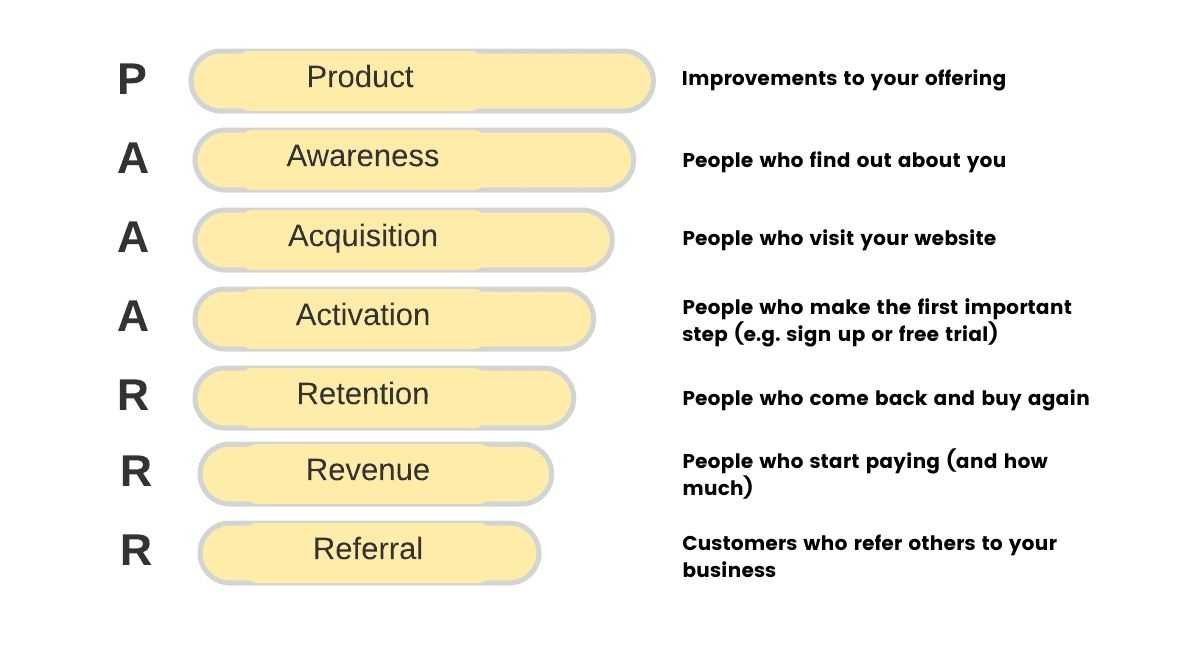Your complete partner marketing guide
- Publication date
- Author
- Imogen Beech
- Reading time
- 10 minute read
Partner marketing makes the world go round. And we mean that literally. A whopping 75% of world trade flows indirectly, according to Forrester, making channels, partnerships and alliances crucial.
Plus, if you’re looking to grow your business, it’s in your best interest to get your head around partner marketing. According to Hinge’s 2020 High Growth Study, high-growth brands are three times more likely to use marketing partnerships as part of their overall strategy than no-growth firms.
So, to get to the point, what actually is partner marketing? How does it work? And how do you become a marketing partner? Read on to have all your questions answered.
Partner marketing, also known as partnership marketing, is when two or more brands team up on a strategic marketing campaign, to the benefit of both. Usually, this will involve marketing one or both brands (or their products), in order to provide a boost to awareness, acquisition or activation.
However, exactly what partner marketing can look like will vary a lot depending on the brands involved, their goals, and the type of partnership marketing they embark on. Partner marketing is really an umbrella term that refers to any partnership where brands collaborate on marketing activities.
Have you heard of affiliate marketing (where one partner promotes the other and gets rewarded based on performance)? Or content marketing partnerships (where partners team up to create and promote a piece of content)? These are just a couple of well-known partnership types that fall under the bracket of partner marketing.
We’ll take a closer look at the different types of partner marketing in a minute. Before we get there though, we bet you have a couple of questions. First…
There isn’t one! Rather, partner marketing is a specific kind of strategic partnership where partners collaborate on marketing.
Let’s rewind a little. A strategic partnership is any kind of agreement where two brands work together to gain value.
That might mean working together on a joint marketing campaign, in which case the partnership could be referred to as both a strategic partnership and partner marketing. Or it could mean working together on something other than marketing, for example, a product partnership (where brands team up to create a new product or improve an existing one). In this case, it would still be a strategic partnership but wouldn’t fall under the realm of partner marketing.
So, as confusing as it might sound, partnership marketing is an umbrella term that falls beneath the even wider umbrella term of strategic partnerships!
Of course, most strategic partnerships do involve some level of partner marketing. Let’s go back to our product partnership example and imagine that two brands work together to create a self-driving car (that might sound whacky but this is actually an industry that’s riddled with strategic partnerships – read our piece on partnerships shaping the future of business to learn more).
The act of using both brands’ skills to create the car wouldn’t count as partner marketing as there’s no marketing involved. Instead, the brands will probably share tech, personnel and other resources. However, the likelihood is that the two brands will want to promote their self-driving car or even just shout about what they’re doing together to raise brand awareness before the product is ready. Any activities related to promoting the product or using the product to promote their brands would fall under partner marketing. You see the overlap!
To explain the difference between strategic partnerships and partner marketing, we find it helpful to go back to basics with the pirate funnel.

Okay, okay, so we’ve amended the funnel slightly and added a ‘P’ for ‘product’ to the beginning. Hence why we like to refer to it as the PAAARRRtnership funnel. But we digress!
While a strategic partnership can help brands to optimise any of the steps in the funnel, partner marketing is generally focused on helping brands with the three ‘A’s – awareness, acquisition and activation (although that’s not a hard and fast rule and you will find exceptions!).
Here’s another question you might be wondering...
That depends on who you talk to! As far as we’re concerned, comarketing is a type of partner marketing, just like affiliate marketing and content marketing partnerships.
Comarketing is when two or more brands work together to promote something. What they choose to promote could be anything from a product to a piece of content or an event. However, the crucial thing is that both brands should share the benefits of their joint marketing efforts equally.
We know what you’re thinking: partner marketing also involves two brands teaming up together on marketing. So, surely they’re both just different terms for the same thing?
Well, we see your point. But we believe the key difference is this: with partner marketing, only one brand actually needs to do the promoting.
Don’t get us wrong. Often, both brands will use their channels to promote something as part of a partner marketing campaign. But this isn’t always the case. Consider affiliate marketing, for example, where one party promotes the other in exchange for a performance-based monetary reward.
With comarketing, on the other hand, both partners will use their respective channels to promote something as part of a collaborative marketing campaign. In this way, they each leverage one another’s audiences and are usually able to access new markets as a result.
Now, some people will disagree with us. You can find so many different definitions of comarketing on the internet, and many will tell you that ‘comarketing’ is simply another word for ‘partner marketing.’ Obviously, we disagree, but it’s useful to keep on your toes when you hear either of these terms being bandied around. After all, you never know what definition the other person is working with!
Just like comarketing, channel marketing is another partnership type that falls under the partner marketing bracket.
Let’s start at the beginning. A channel partner is someone who sells someone else’s products. In other words, they sell a product or service without actually manufacturing or creating it.
A channel partner can come in lots of different forms, from a distributor (someone who buys a product from a manufacturer and then sells it on to a retailer or wholesaler) to a retailer (someone who purchases a product from a wholesaler and then sells it directly to a customer online or in a shop). These are both known as resellers as they are, quite literally, ‘reselling’ a product.
However, any business could be a channel partner really. For instance, a business might combine their own product with yours to add value to both and then sell them together directly to a consumer. This is especially common in tech and is known as bundling.
Reselling and bundling are both types of distribution marketing partnerships, where one brand makes use of another’s distribution channels to promote or sell its products or services. Channel marketing is just a more specific version of the same thing, where a brand uses a channel partner as a route to market. It allows one brand to focus on the manufacturing of its products while another becomes responsible for promoting and selling them (although of course, a brand can sell products directly to consumers as well as working with channel partners).
Anyway, as you can see, channel marketing partnerships, and distribution marketing partnerships more generally, involve two or more brands collaborating to market a product. So, that makes them both types of partner marketing, although of course, they have their own specific considerations.

Anyone can be a marketing partner. And we mean anyone! While partner marketing used to be largely focused on traditional affiliate marketing, it’s since evolved into a flourishing partner ecosystem where brands can experience both sides of the coin as the promoter and promotee according to their needs and those of their partners.
Marketing partners range from B2B brands to B2C brands, charities, media houses, influencers, comparison sites and so, so much more. In short, if you have an audience you could promote something to, or you have a product that you want someone else to promote, you can be a marketing partner.
That said, depending on your strengths, weaknesses and needs, you’re likely to find you’re more drawn to some partner marketing types than others. Which brings us onto...
There are no hard and fast rules when it comes to partner marketing. Ultimately, you can team up with another brand in whatever way you choose to bring benefits to you both. That might involve merging together more than one ‘partner marketing type’ or inventing a new type of strategic partnership altogether!
That said, there are some tried and tested types of partner marketing that will act as a good starting point.
Of course, any of these partner marketing types can also operate as part of a larger strategic partnership where brands go one step further to share tech, resources, personnel and more. Check out our selection of the best partner marketing examples to get a better idea of the vast range of collaborations that you can find under the partner marketing bracket. Or, read our guide to the different types of strategic partnerships for a full lowdown of all the different ways we’ve known brands to collaborate.

Teaming up with another brand on partnership marketing isn’t rocket science. The most important thing is to consider what goals you’re looking to achieve through a partnership, and then to consider how you could bring value to your partner brand in return. Trust us, neglecting to consider what you can offer your partner brand is one of the biggest reasons why partnerships fail!
As a general rule of thumb, we’d recommend following these simple steps to start your journey.
Want to learn more about becoming a partner marketer? Check out our guide to finding the right fit in a partner. Or read up on how to find strategic partnerships (a little clue: Breezy will make the process a whole lot easier!).
--
Congrats! You’ve reached the end of our guide, which means you’re now a total partner marketing pro. If you want to get even savvier, you can keep your finger on the partnerships pulse with our monthly roundup (read our October partnership news summary for starters). Or browse our blog, which is full of partnership tips.
Oh, and don’t forget to book a demo with Breezy. We can't wait to show you how our partner search engine can supercharge your partner discovery (and you’ll get some great Leads out of it too!). Enjoy!
Imogen is a copywriter and content writer with over two years’ experience writing about the exciting world of strategic partnerships, as well as running her own business. She loves learning about new topics as she writes, and has enjoyed penning articles on industries ranging from mortgages to events, theatre to home improvements and everything in between.
View more by Imogen Beech